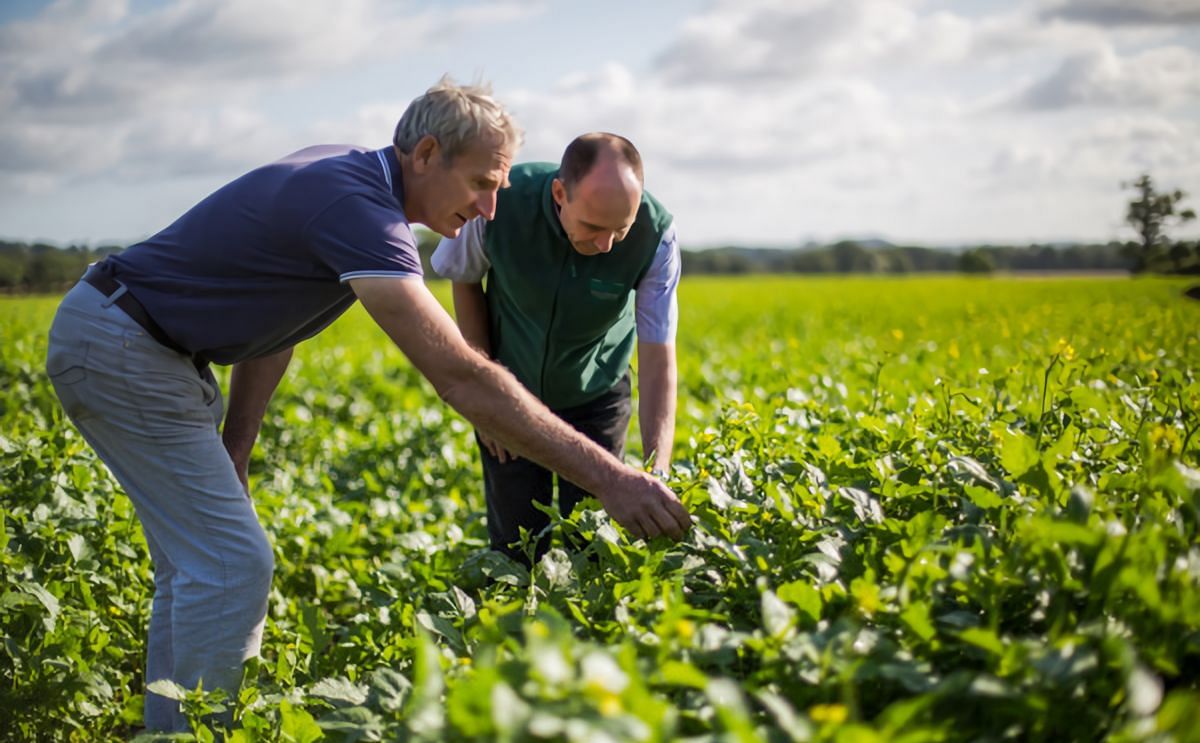Crop4Sight Releases Innovative Irrigation Scheduling Tool
Crop4Sight adds irrigation scheduling tool to their potato crop toolkit

Crop4Sight’s online and mobile digital toolkit is designed to help growers maximise saleable potato yields and was launched as a commercial service in 2020. Crop4Sight now adds a potato irrigation scheduling tool.
The new irrigation schedule tool uses a state-of-the-art potato specific water balance model. The Crop4Sight irrigation tool delivers convenient irrigation schedules whenever you require them. If the weather or irrigation equipment availability changes, an updated schedule can be produced at the click of a button for each crop.
Using tailored soil type, variety information and the farm irrigation capabilities, Crop4Sight creates crop specific irrigation schedules, for the week ahead. Choose whether you want to irrigate for scab control, yield or set your own soil moisture deficit (SMD), and the tool uses all of this, and more, to calculate your water balance, creating a schedule bespoke to your priorities.
Hourly meteorological data for including evapotranspiration (ET), windspeed, relative humidity and rainfall are automatically pulled in for each crop. We even calculate the rainfall to keep your water balance more accurate if you haven’t had time to read the rain gauge at your field.
Dr Robert Allen:
Efficient, cost effective, irrigation requires evaluation of both supply (soil moisture) and demand (crop water use). Use of soil moisture probes only provide insight of the supply side. The available water required by the crop will vary on a daily basis, so on any given day a soil moisture deficit (e.g. 20 mm) could be excessive, sufficient or insufficient. In this case irrigation is likely to be inefficient and may not meet crop requirements.
Irrigation scheduling accounting for crop growth, soil type, environment and agronomic (e.g. disease management) will tailor irrigation requirements to meet crop demand with the minimum water required. In combination, soil moisture probes provide excellent validation of the water balance and can be used to calibrate the scheduling service.
The new irrigation schedule tool uses a state-of-the-art potato specific water balance model. The Crop4Sight irrigation tool delivers convenient irrigation schedules whenever you require them. If the weather or irrigation equipment availability changes, an updated schedule can be produced at the click of a button for each crop.
Using tailored soil type, variety information and the farm irrigation capabilities, Crop4Sight creates crop specific irrigation schedules, for the week ahead. Choose whether you want to irrigate for scab control, yield or set your own soil moisture deficit (SMD), and the tool uses all of this, and more, to calculate your water balance, creating a schedule bespoke to your priorities.
Hourly meteorological data for including evapotranspiration (ET), windspeed, relative humidity and rainfall are automatically pulled in for each crop. We even calculate the rainfall to keep your water balance more accurate if you haven’t had time to read the rain gauge at your field.
Dr Robert Allen:
"The module is integrated with Crop4Sight’s crop monitoring and yield forecasting tools and uses the same in-season data making it work harder for you."Using this data the scheduled irrigation accounts for crop growth stage, soil moisture and environmental conditions. This allows growers to efficiently manage soil moisture so that crop yield is not restricted, while at the same time scheduling so that water is not lost to drainage and waisted. Crop4Sight:
"This saves irrigation costs giving growers more crop per drop!"
The team at Crop4Sight, who are all highly experienced potato agronomists, do the hard work and give simple answers for timely profit driven decision making.
Why is irrigation important ?
- Crop growth and yield. Avoiding limits to crop growth throughout the season is essential for achieving target yields. When the amount of available soil moisture cannot supply all of a crops water demand growth and yield will be limited. Irrigation scheduling tells you when and, how much water, to apply to ensure optimal growth conditions are maintained.
- Drainage and excessive irrigation. Excessive soil water is a potential limit to crop growth, increases risk of disease or defects and is an inefficient use of water. When the maximum soil water holding is reached any excess will be lost, via drainage, and be unavailable to the crop. Efficient irrigation maintains optimal crop growth conditions and minimises drainage.
- Common Scab control. Maintaining soil moisture during tuber initiation is the main management practice for controlling Common scab (Streptomyces scabies). The target soil moisture required for scab control is specific to each soil type and variety. Managing soil types. Water holding capacities vary across the soil types used in potato production. The amount of irrigation required to grow the same variety on two different soil types (e.g. Coarse Sand or Silt) will be different.
- Matching irrigation to the environment. Common irrigation strategies involve applying water when a target (or trigger) soil moisture deficit is reached. This approach does not account for environmental conditions or operational capacities. Effective irrigation will account for environmental conditions and likely demand to ensure sufficient water is always available to the crop.
Efficient, cost effective, irrigation requires evaluation of both supply (soil moisture) and demand (crop water use). Use of soil moisture probes only provide insight of the supply side. The available water required by the crop will vary on a daily basis, so on any given day a soil moisture deficit (e.g. 20 mm) could be excessive, sufficient or insufficient. In this case irrigation is likely to be inefficient and may not meet crop requirements.
Irrigation scheduling accounting for crop growth, soil type, environment and agronomic (e.g. disease management) will tailor irrigation requirements to meet crop demand with the minimum water required. In combination, soil moisture probes provide excellent validation of the water balance and can be used to calibrate the scheduling service.
Like to receive news like this by email? Join and Subscribe!
Get the latest potato industry news straight to your WhatsApp. Join the PotatoPro WhatsApp Community!
Uitgelichte Bedrijven
Sponsored Content
Sponsored Content
Sponsored Content
Sponsored Content







